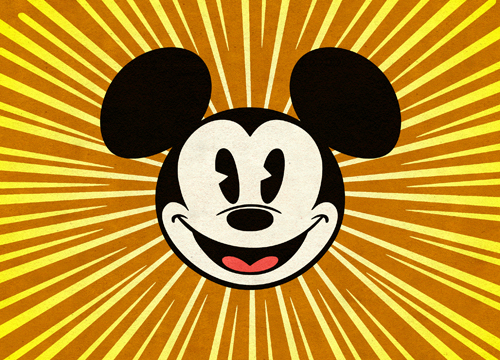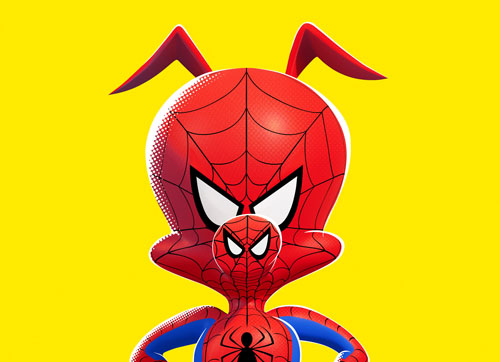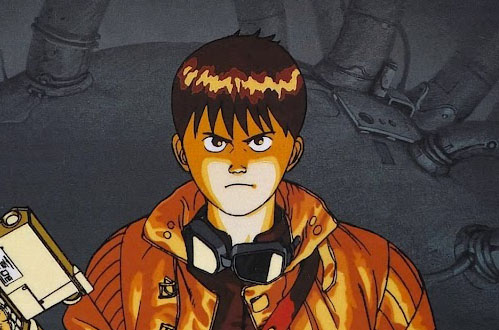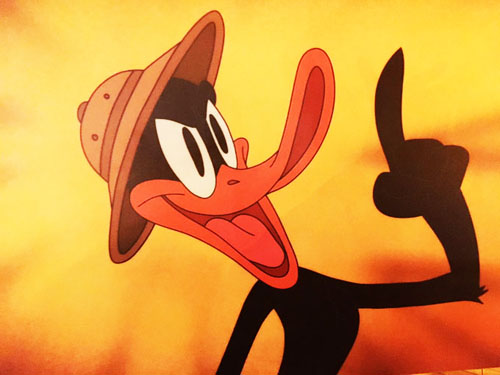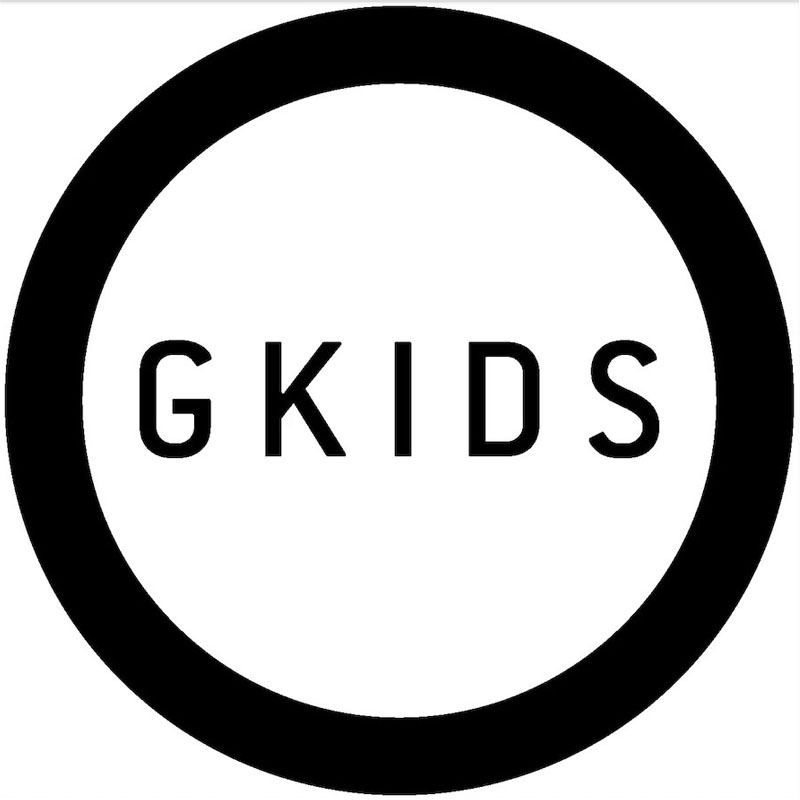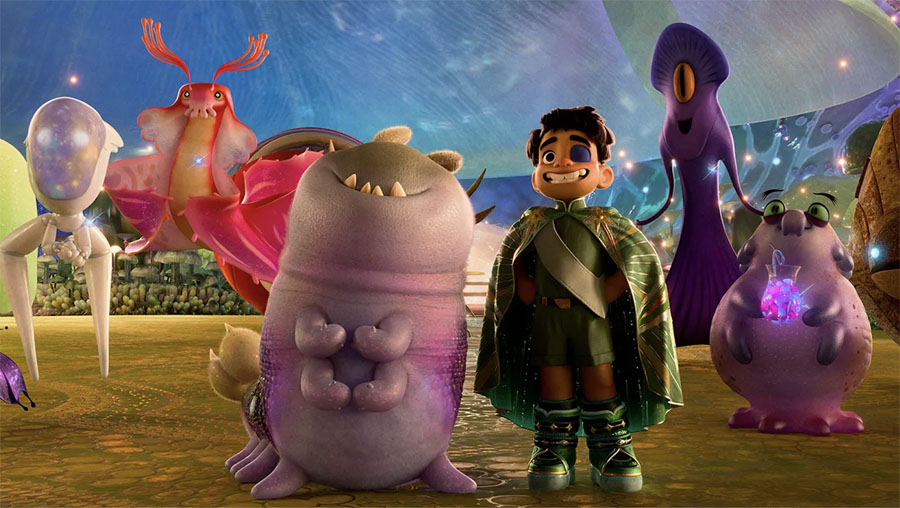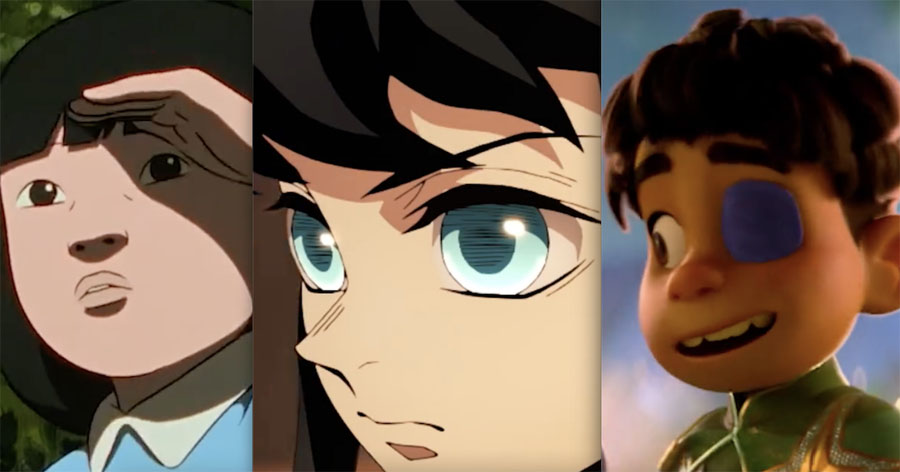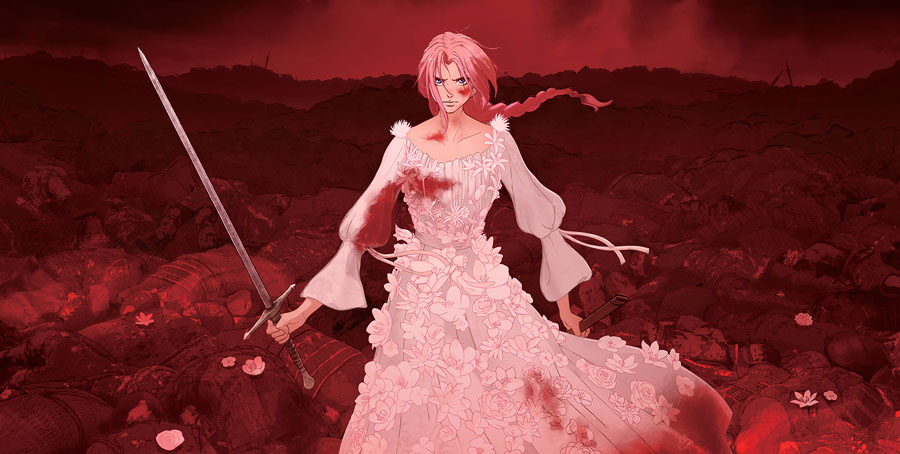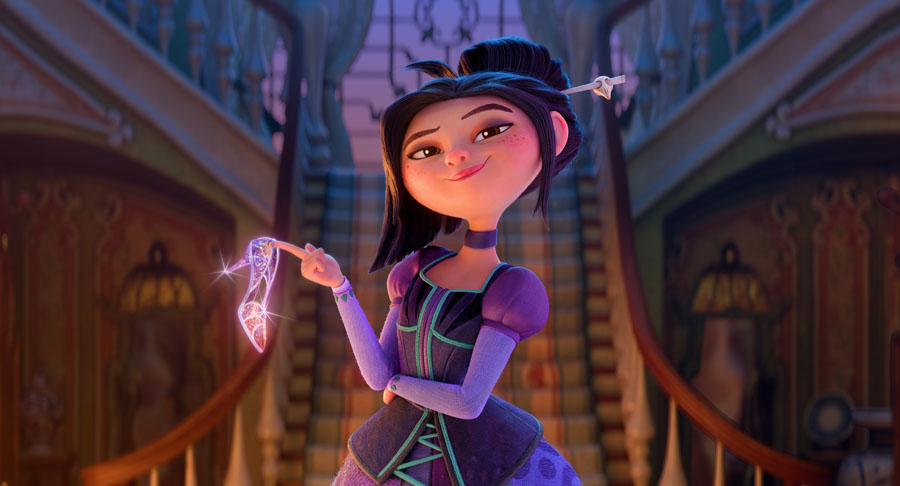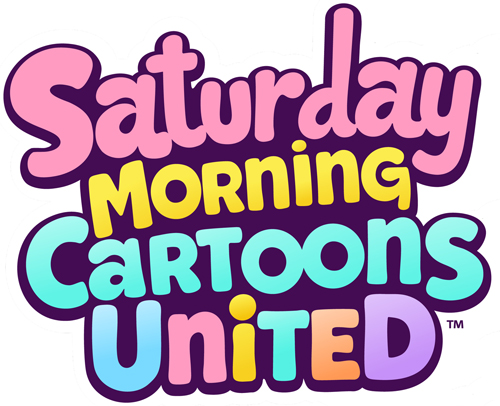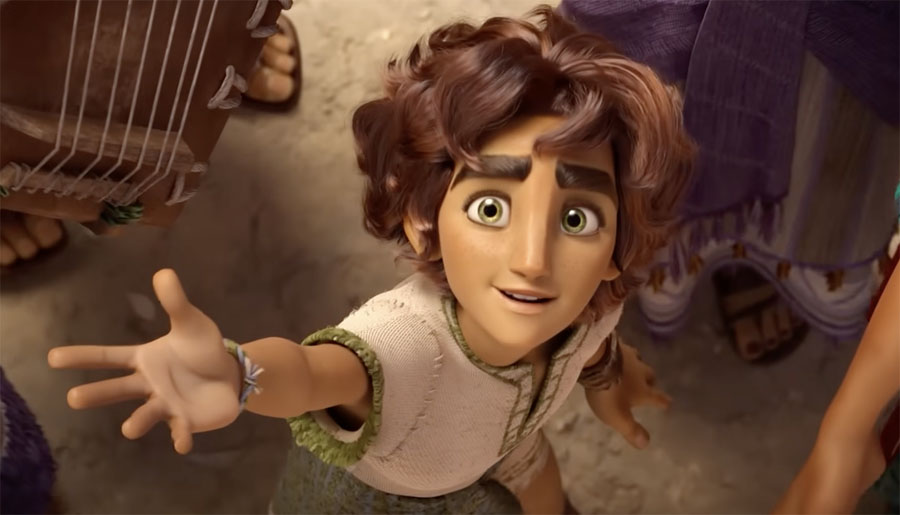Although many graphic novels and manga focus on LGBTQ kids, the complex characters and exceptional draftsmanship set Kaito’s “Blue Flag” above the tepid Western fantasies and run-of-the-mill BL (“Boy’s Love”) manga. (It was a finalist for the LA Times Book Prize for Graphic Novel.) Sadly, the publication of Volume #8 marks the end of Blue Flag, but Kaito understands that his story has a length.

The first books set up a complicated romantic polygon involving students at Aohama High School. Morose, alienated Taichi Ichinose is surprised to find himself attracted to Futaba Kuze, an extremely shy girl who constantly apologizes for her mistakes—even when she hasn’t made any. After some nervous stumbles, they begin dating
Initially, Futaba nurtured a crush on Taichi’s childhood friend Toma Mita. Athletic, tall and good-natured, Toma is “the popular kid the whole class revolves around.” But he’s secretly in love with Taichi. Completing the main cast is intelligent, volatile Masumi Itachi, who sighs longingly over Futaba’s soft, fluffy hair.
The story begins building to its climax in Volume #6, when Toma tells Taichi he loves him. “Confessing” is almost a rite of passage in high school manga and anime. All the drama, insecurities and hormones teen-agers endure crystalize in a declaration of affection. Taichi doesn’t know how to respond, and Toma walks away in silence.
The news of Toma’s confession roils Aohama High, just as the students are preparing for their all-important college entrance exams. Toma’s friend Kensuke declares he can’t accept guys liking guys; Mami berates him for being closed-minded. A few students wonder what a guy as attractive as Toma sees in the glum Taichi—or why Taichi didn’t agree to go out with him.
After considerable agonizing, Taichi declares he wants to continue to date Futaba but keep Toma as his best friend. Toma warns him (from experience), “It isn’t easy to keep being friends…with a person you turned down.” Taichi replies, “It’s gotta be way harder to keep being friends with the guy who turned you down!”
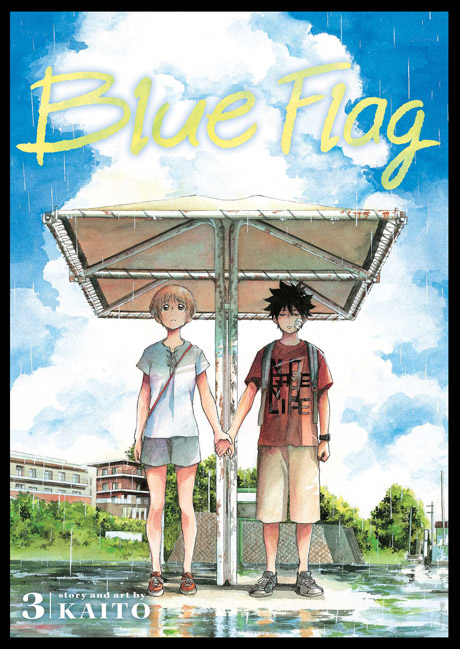
Blue Flag is about choices. As high school seniors, the main characters and their friends are making choices about their futures: What colleges to apply to, what career to pursue, whom to date, whom to befriend. Whether trivial or momentous, their choices have consequences.
His polished draftsmanship enables Kaito to show his characters as elementary school children and adults, as well as high school students. He captures the changes in facial proportions the years bring, and how a person’s gestures and expressions evolve over time. He’s also a master at presenting conflicting emotions in a single drawing. When Toma looks at Taichi, the reader can see the affection–and the loneliness. Futaba stares down at her feet, struggling to maintain her fragile composure. Taichi’s morose stare suggests the confused thoughts and emotions swirling in his brain.
Kaito reveals the characters’ key decisions and their consequences in the “Final Chapter” Of Volume #8, set seven years later and told from Toma’s point of view. Everyone in the story has moved on: They’ve found jobs and started families. Toma arrives at Futaba’s wedding alone. Masumi arrives with a nervous but adoring new husband. Futaba tells Toma and Masumi that she still looks up to them.
At a commuter train station, Toma meets Taichi, who’s coming from another wedding—their old classmate Omega was getting married on the same day. They compare notes and photos. Toma affectionately summarizes the manga’s theme: “Life is a never-ending series of choices. Even when you try to make the best choices you can…you might hurt someone. You might hurt yourself. You might wind up regretting the whole thing. Conversely, one choice might go so well…and you might find happiness so precious to you…that you fear making the next choice that faces you.” Blushing happily, Taichi reaches out and says, “Let’s head home.”
A well-rendered drawing of two hands joined in love brings Kaito’s story to a warmly satisfying conclusion.
Blue Flag, Books 1-8
by Kaito
Viz: $12.99 each, 208 pp., paperback
